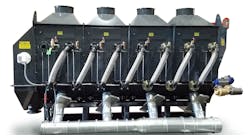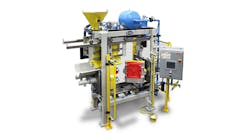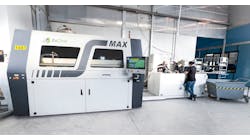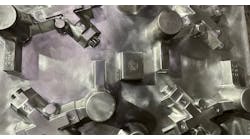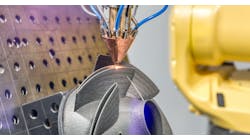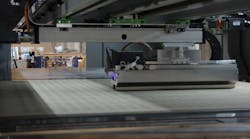Wohlers Associates Inc. has issued the 2015 edition of its annual report and analysis of 3D printing and additive manufacturing worldwide, the 20th anniversary edition of the study that is considered the most accurate and reliable analysis of the new manufacturing sector. The new Wohlers Report 2015 is 314-page volume with several dozen charts, graphs, and tables, and nearly 300 photos and illustrations. For sale at $495, it was developed with support from 87 service providers, 40 system manufacturers, and the contributions of 78 co-authors from 31 countries.
Foundries have emerged as one of the most viable of established manufacturing sectors for incorporating additive manufacturing and 3D printing processes. In particular, patternmakers are adopting sand printing techniques, as are foundries themselves. More directly, foundries and OEMs are embracing AM and 3DP to produce cores and molds with more speed and consistence.
This has helped to accelerate product development for AM and 3DP systems and services targeted to metalcasting operations. When GIFA opens June 15, The ExOne Co. will unveil its largest 3D printing system to date, the Exerial™. This machine will allow metalcasters and other manufacturers “to engage with the indirect printing technology for industrial series production, beyond the rapid prototyping and small batch production for which the company’s other systems are currently being used.
“ExOne’s industrial customers are pressing for latter-stage technology to address their production needs with a 3D printing system that supports higher volumes and automation for the industrial production environment. When the Exerial system rolls out this year, ExOne will have addressed the industrial-level solution, further separating binder-jetting as a more cost effective technology than other 3D printing solutions,” stated chairman/CEO S. Kent Rockwell.
In contrast to earlier ExOne systems, Exerial contains multiple industrial stations that allow for continuous production and simultaneous processing. It is fixed with two job boxes, each 1.5 times larger than the single job box in ExOne’s next largest model, the S-Max. The total build platform is 3,168 liters, and the developer expects it to "print" nearly four times faster than the S-Max. Also, the Exerial uses a new recoater system, multiple print heads and automation controls.
In the production sequence, Exerial uses ExOne’s binder jetting technology, and its multiple print heads dispense micro-droplets of specially engineered binder into thin layers of powdered material within each of the two job boxes.
ExOne has filed five patents related to Exerial machine design elements.
“We are investing in the latter stages of our R&D process for the Exerial as we respond to an initial purchase order of four machines,” said Rainer Hoechsmann, chief development officer. “We expect to deliver the first beta machine and then the other three machines over the course of the first three quarters of this year, with additional commercial availability likely at the end of 2015 or early 2016.”
Wohlers Associates new market study — the group claims to have the largest network of contacts in the 3DP/AM industry — explains how the market for additive manufacturing grew at a compound annual growth rate of 35.2% to $4.1 billion in 2014. The industry expanded by more than $1 billion in 2014, with 49 manufacturers producing and selling industrial-grade AM machines.
The industry’s CAGR over the past three years (2012–2014) was 33.8%.
Wohlers Report 2015 provides an in-depth review and analysis of the industry worldwide, including growth, competitive products and services, and the future outlook for the industry. It examines all aspects of AM and 3D printing, including its history, applications, processes, materials, and equipment manufacturers. It covers developments in R&D, investment, and collaborative activities in government, academia, and industry. And, it summarizes the state of the AM industry around the world.
Wohlers Associates reports that growth occurred in all segments of the diverse industry, including the desktop 3D printer segment. Industrial metal AM systems for demanding production applications in the aerospace and medical markets also grew at a significant rate.




